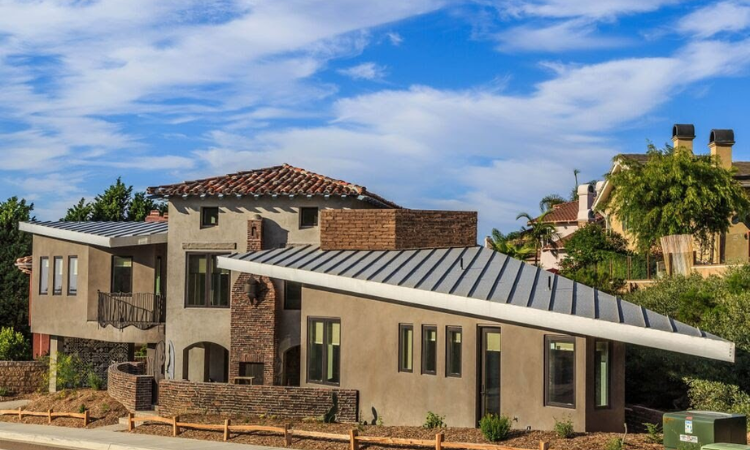Roofing with a slope of 10 degrees or less is said to have a modest slope. They are frequently utilized for business and manufacturing facilities, as well as in certain residential construction. Despite the common misnomer, roofs with a low slope are not truly flat.
Advantages of Low-slope roofs
- Roofs with a shallow pitch don’t cost as much to put up.
- They are also simple to fix if something goes wrong.
- Low-slope roofs can be constructed from many different materials, providing design and cost versatility.
- Green roofs and solar roofs are only two of the many roofscape options available when working with low-slope roofs.
Various Low Slope Roof Designs
- There are three primary types of low-slope roofing systems:
- Flat/membrane systems: The roof in these systems is protected by a single membrane.
- Multiple layers of asphalt, felt, and tar are used in the Built-up Roofing System (BUR).
- The membrane in a modified bitumen system is more impervious to the effects of sunlight and other environmental conditions.
Low-slope Roofing Materials.
- These are the most typical materials for low-slope roofs.
- Tar and asphalt are low-cost and simple to work with.
- The elements have no effect on metal or sheet metal because of their resilience.
- Lightweight and simple to set up, single-ply membranes are a great option.
Procedure for Low-Slope Roof Installation
The method of installation for low-slope roofs differs from the chosen system.
But the fundamentals are as follows:
In other words, get the roof ready.
Methods
- Lay the subfloor.
- Lap the roof membrane in place.
- Low-slope roofs have a longer lifespan provided they are regularly maintained and inspected.
- Low-slope roofs need to be checked for damage and wear once a year.
The most typical issues with flat roofs are:
- Leaks
- Issues with drainage
- Inadequate Sealing
- Water pooling
- Photochemical deterioration
- Change for the worse
- Inflated or blistered areas
- Fracture
If any of these issues are discovered, they need to be fixed immediately to avoid any additional destruction.
Common Issues with Low-Slope Roofing and How to Fix Them?
The most prevalent issue with roofs that have a shallow pitch is leaks. Many things can set them off, such as:
- Roof membrane tears or punctures
- Inadequate set-up
- Faulty lighting
- Drains that are clogged or blocked
- Leaks can be a symptom of, or even the cause of, poor drainage. Potential triggers include:
- Roof has the wrong pitch
- Drains that are clogged or blocked
- Gutter overflow
Water can leak through a roof and cause damage if the seams aren’t properly sealed. Possible causes include:
- Inadequate set-up
- Faulty lighting
- Roof membrane damage
Water pooling on the roof: This might cause the roof membrane to stretch and eventually leak. Possible causes include:
- The roof has the wrong pitch
- Drains that are clogged or blocked
- Gutter overflow
I really think this summary will assist. If you have any further inquiries, please let me know.

